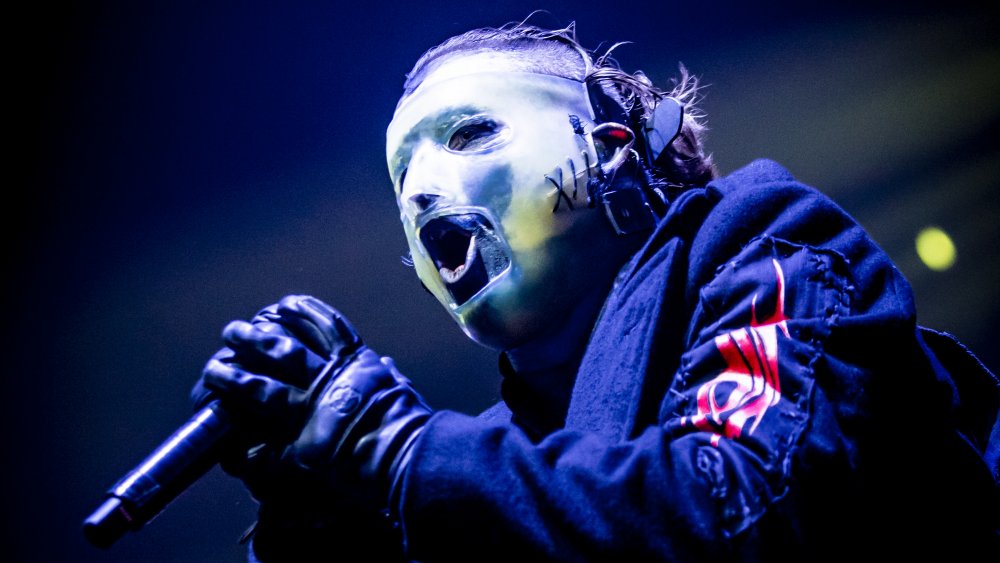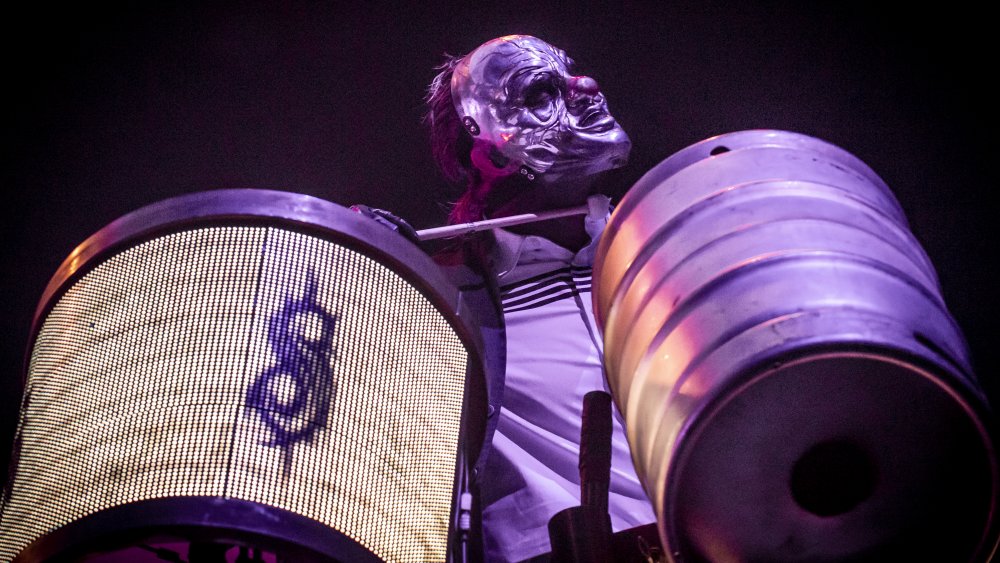The Hidden Meaning Of Slipknot's Masks
"Man is least himself when he talks in his own person. Give him a mask, and he will tell you the truth." - Oscar Wilde
Gwar. Ghost. Finland's Eurovision-winning monster band Lordi: Slipknot is in good company with their mask-wearing stage brethren. Taking into account all the bands around the world who wear costumes or makeup (Kiss, Mushroomhead, Heilung, Behemoth, to name a few), it's clear that the practice of adopting alter egos for the purpose of artistic expression is not at all uncommon, especially when it comes to music. For the purpose of ritual, particularly dance or theater, masks have been used in Nuo drama in China, Noh and Kabuki in Japan, Kathakali dances of India, countless Native American tribes, and numerous Nigerian tribes. Of course, these cultures far, far predate Slipknot's twenty years of musical service, but the parallels are clear: communication, storytelling, and revelation of truth.
Since Slipknot's 2001 breakout album Iowa, and even their self-titled 1999 album before it, Slipknot have left a permanent, spike-and-latex-shaped imprint on the metal world. In the early days, their (comparatively low-budget) masks helped them stand out, and since then they've developed new masks with each album. Like chapters in a book, these masks reveal, rather than cover, and strengthen their music, rather than detract from it. Slipknot's savage, percussive rhythms underscore the tragic, painful elements of life that demand being faced monster-to-monster: the monster within versus the monster without, and how the creatures inside shift and change over the years.
The masks that everyone wears
In a 2016 interview with the BBC Two, Slipknot members Corey Taylor (vocals) and Shawn Crahan (percussion) stated precisely what the masks represent. In short, the masks let each individual represent his true self, free of constraints like social politeness, shared mannerisms, or conventional morality. They're a way to liberate the self, and push the energy and aggression of their performances to the forefront, without holding back. As Taylor says, "The mask for me has always been that physical representation of the person inside me who just never had a voice. It allows me to be me... I'm showing you more than I've ever revealed." Crahan goes on to say that people are always "looking for a better face" and presenting themselves in manicured, vain ways rather than solidifying their senses of self.
Each of the nine members of Slipknot has a custom mask to represent themselves. As for the individual meanings of each member's mask, we can look at the latest designs adopted since 2019's We Are Not Your Kind. There's the jester, the clown, the pinheaded gimp, the hockey-mask killer, the clockwork pig warrior, the hooded stalker, the stitch-mouthed silent one, and the bloated burn victim, as outlined in MetalSucks. These aren't just fun ways to describe character sketches in a high school notebook during history class, though, they're a way for Slipknot to play with perception and show the world who it truly is.

